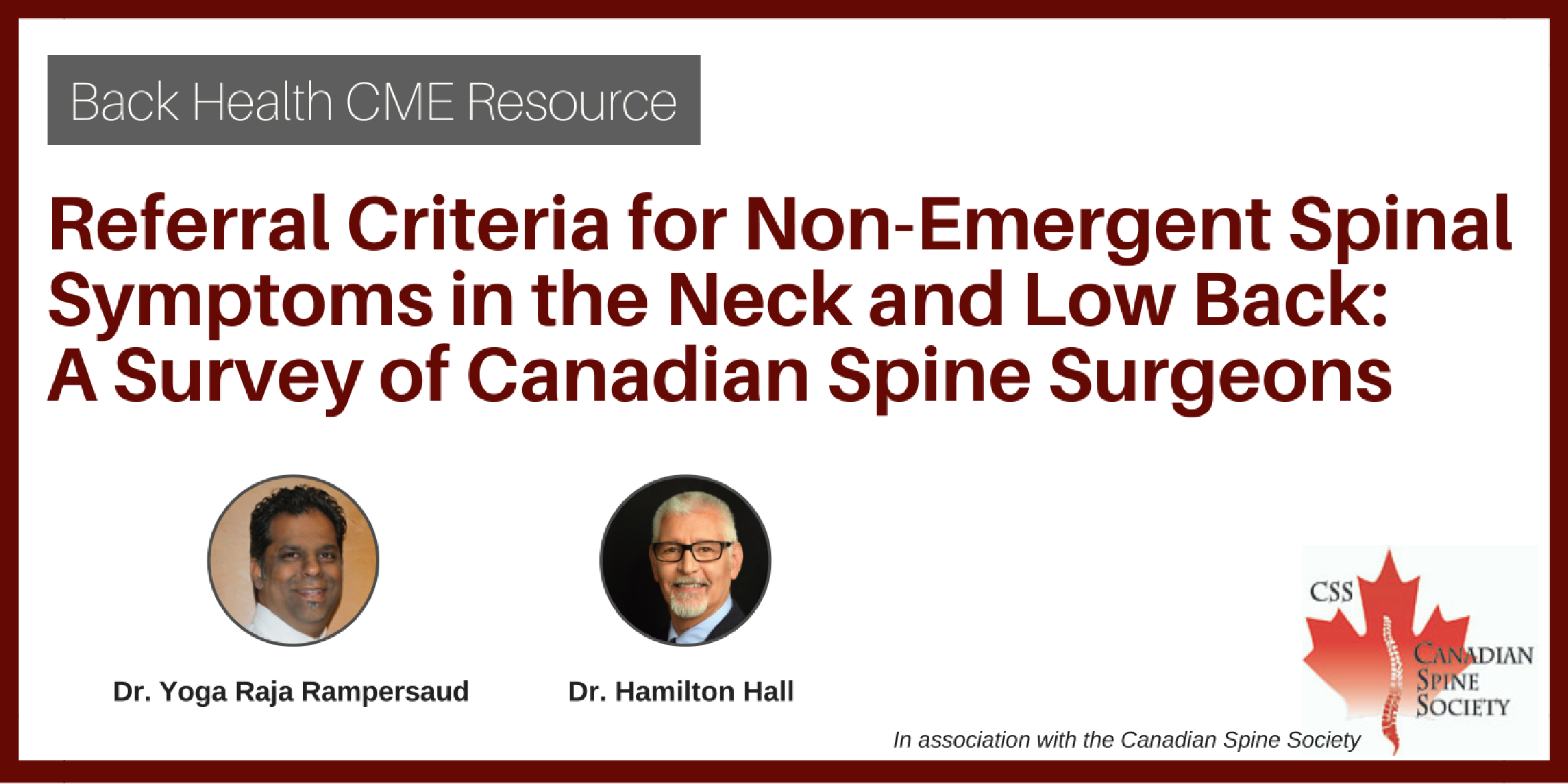Referral Criteria for Non-Emergent Spinal Symptoms in the Neck and Low Back: A Survey of Canadian Spine Surgeons

Members of the College of Family Physicians of Canada may claim one non-certified credit per hour for this non-certified educational program.
Mainpro+® Overview